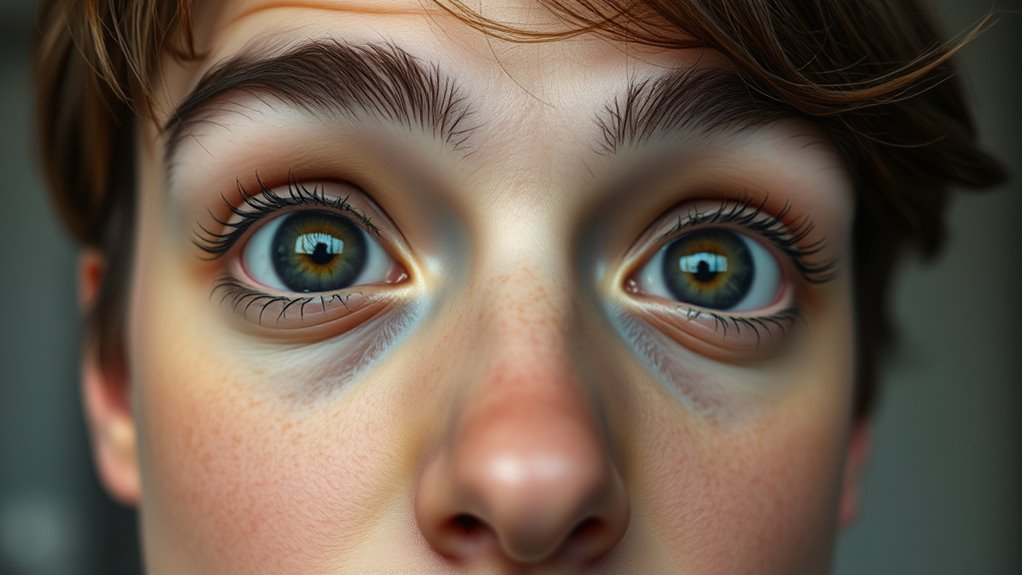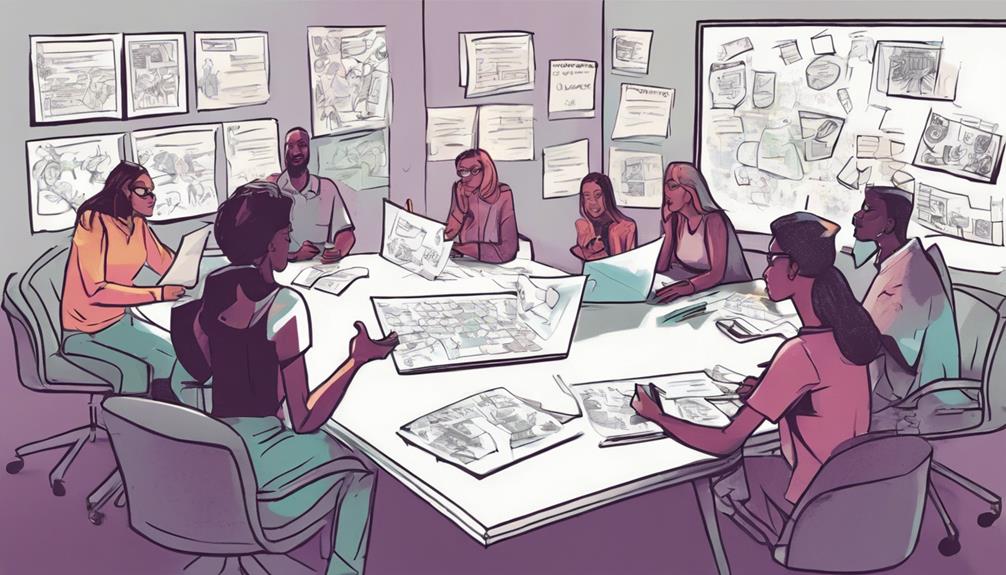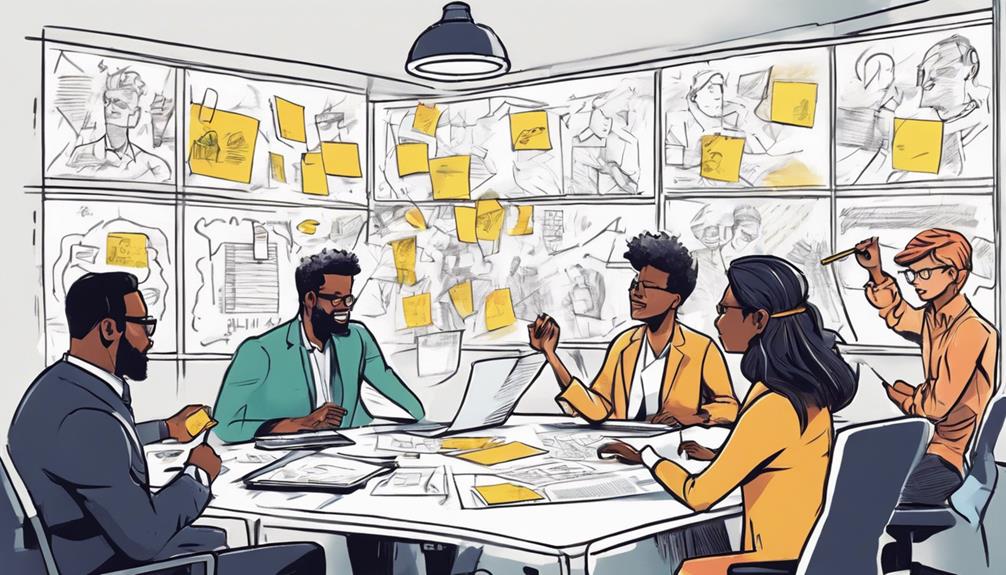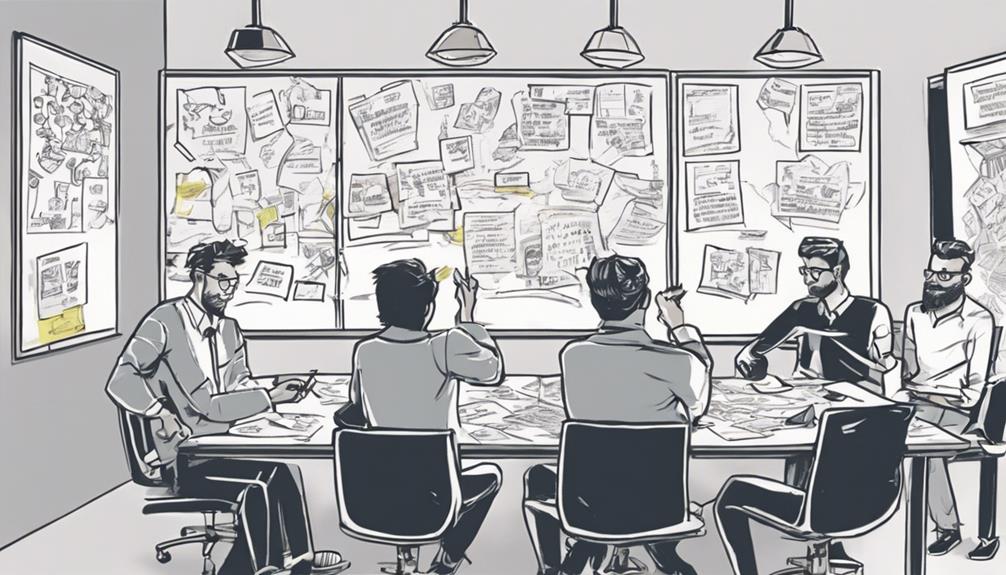In the first five seconds, your brain rapidly assesses trustworthiness by analyzing facial expressions, eye contact, and body language, often subconsciously matching them to past experiences and biases. Sensory cues like voice tone or scent also trigger emotional responses that influence your impressions. Neural pathways, including mirror neurons, help process these cues instantly, shaping how you perceive others. Understanding these mechanisms allows you to intentionally craft signals of trustworthiness early on—keep exploring to uncover ways to optimize your first encounters.
Key Takeaways
- The brain rapidly assesses facial features and cues within seconds, forming initial impressions unconsciously.
- Positive visual and emotional signals, like a warm smile, activate neural pathways that foster trust.
- Mirror neurons help mimic and respond to social cues, enhancing rapport during the first moments of interaction.
- Past experiences and implicit biases influence neural processing, shaping perceptions even before conscious awareness.
- Conscious awareness and strategic use of social cues can modulate neural responses, improving first impressions within five seconds.
The Brain’s Rapid Assessment System
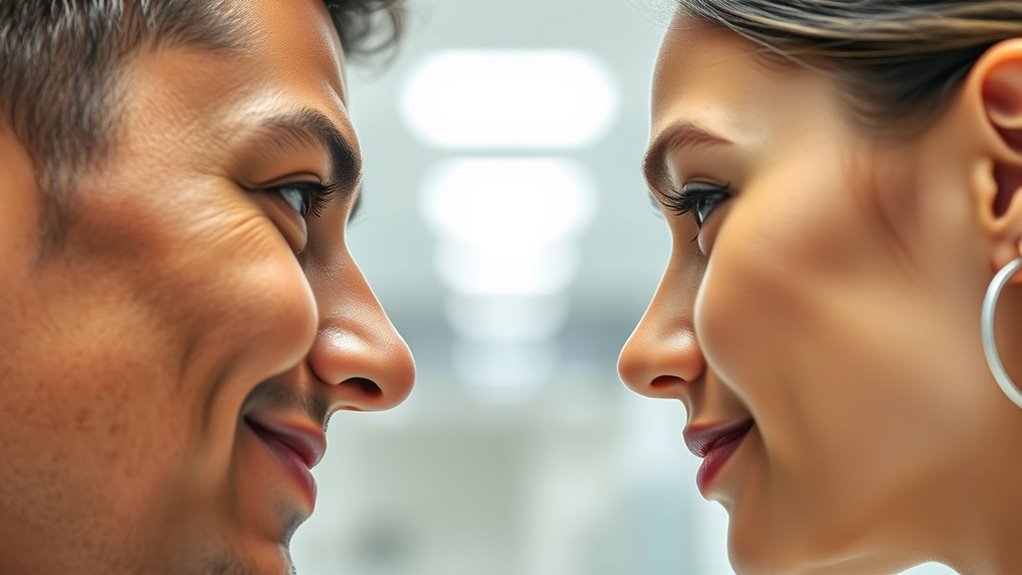
Have you ever wondered how your brain decides whether someone is trustworthy within seconds? It all happens through your brain’s rapid assessment system, which uses facial recognition and subconscious processing. When you meet someone new, your brain quickly scans their face, analyzing features like expressions, eye contact, and even subtle cues. This happens almost automatically, without you realizing it. Your subconscious processes this information instantly, comparing it to past experiences stored in your memory. If the face triggers positive associations, you’ll perceive the person as trustworthy. If it signals discomfort or suspicion, your brain might flag them as untrustworthy. This lightning-fast evaluation helps you navigate social interactions efficiently, often before you even consciously realize what you’re feeling. Additionally, initial impressions are often shaped by visual cues and environmental factors, further influencing your trust assessment.
Sensory Cues and Emotional Triggers

Sensory cues such as voice tone, scent, and touch can profoundly influence your first impressions by triggering emotional responses that shape your perception of others. Visual cues, like facial expressions, eye contact, and body language, play a vital role in this process. When you notice a warm smile or confident posture, your brain responds with positive emotions, making you feel more comfortable and trusting. Conversely, unfamiliar or intense visual cues can evoke discomfort or suspicion, affecting your emotional response. These emotional triggers quickly inform your judgment, often before you’re consciously aware. By paying attention to these sensory signals, you can better understand how your brain rapidly forms impressions, guiding your interactions and perceptions in those critical first moments. Incorporating expert voice actors into storytelling can also evoke stronger emotional responses, enhancing the overall impact of your interactions.
Past Experiences and Bias Formation

Your past experiences constantly shape the way you interpret new social encounters, often subconsciously influencing your judgments and reactions. These experiences create implicit biases—automatic assumptions that color your perception without your awareness. Memory influence plays a significant role here; your brain retrieves relevant past events, shaping how you interpret unfamiliar situations. For example, if you’ve had negative encounters with a certain group, those memories may trigger biased reactions when you meet new individuals from that group. These ingrained patterns act quickly, often guiding your first impressions before conscious thought kicks in. Recognizing how past experiences and implicit biases operate helps you understand why initial judgments can be skewed, and it emphasizes the importance of self-awareness in overcoming automatic biases during social interactions. Additionally, understanding Gold IRA Rollovers can offer insights into diversifying your investments, which may indirectly influence your confidence and decision-making processes.
Neural Pathways Behind Snap Judgments
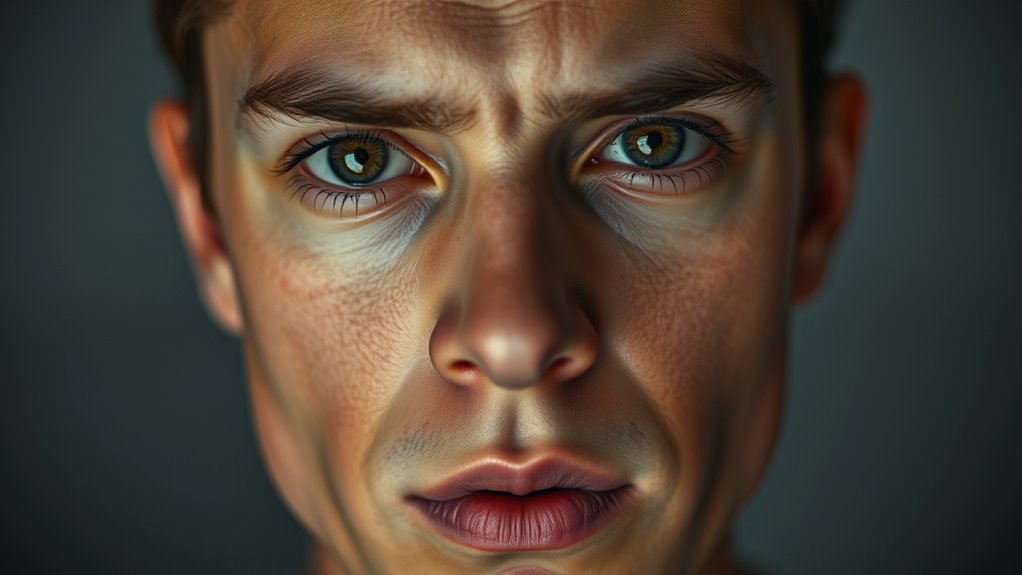
When you make a first impression, your brain rapidly processes social cues through specialized neural pathways that operate almost automatically. Mirror neurons play a vital role by activating when you observe others’ expressions and gestures, enabling you to understand and empathize instantly. This neural encoding helps your brain interpret facial cues, body language, and tone, forming quick judgments about trustworthiness and likability. These pathways allow you to respond swiftly, often before conscious thought kicks in. The process is so efficient that within seconds, your brain has generated a mental snapshot based on these neural signals. Recognizing how emotional processing influences these pathways can shed light on why certain impressions are so powerful and lasting. Understanding these neural pathways reveals how your brain’s automatic systems shape first impressions, highlighting the importance of social cues in shaping your initial reactions to others.
Applying Neuroscience to Improve First Encounters

By understanding the neural mechanisms behind first impressions, you can actively improve your initial encounters with others. Mirror neurons play a vital role in social cognition, allowing you to subconsciously mimic and resonate with someone’s expressions and gestures. When you observe others, these neurons activate, helping you interpret their emotions and intentions accurately. To leverage this, maintain open body language and genuine eye contact, which can trigger positive mirror neuron responses and foster rapport. Being mindful of your facial expressions and tone also enhances social cognition, making your first impression more engaging and authentic. By consciously applying these insights, you can create a more favorable and memorable initial interaction, setting a foundation for deeper connection and trust.
Frequently Asked Questions
Can First Impressions Be Consciously Overridden After Initial Judgments?
You might wonder if you can consciously override your initial impressions. While first judgments form quickly, you can actively engage in impression adjustment by recognizing biases and deliberately reconsidering your perceptions. Though challenging, conscious override is possible with effort, awareness, and open-mindedness. By questioning your assumptions and seeking more information, you can gradually adjust impressions and develop a more accurate understanding of others beyond that first fleeting judgment.
How Do Cultural Differences Influence Neural Responses During First Encounters?
You might wonder how cross-cultural perceptions shape neural responses during first encounters. Cultural differences influence how your brain processes new stimuli, leading to neural diversity in interpreting social cues. These variations mean your initial reactions are deeply rooted in cultural norms, affecting trust and comfort levels. Understanding this helps you realize that neural responses aren’t universal; they’re shaped by cultural backgrounds, which influence perceptions and interactions from the very first moments.
Are There Individual Differences in the Speed of Forming First Impressions?
Imagine catching a glimpse of someone and instantly knowing or questioning your impression. You, like others, show personality variability and neural plasticity, which influence how quickly you form judgments. Some people process first impressions in milliseconds, while others take seconds. Your individual neural responses shape this speed, highlighting that your brain’s flexibility and unique traits determine how fast you decide, blending rapid instinct with nuanced understanding.
Can Technology Enhance or Manipulate the Brain’S Rapid Assessment Process?
You wonder if technology can influence or even manipulate your brain’s rapid assessment process. Neural manipulation through advanced tech, like neurofeedback or targeted stimuli, could potentially shape how you form first impressions. While this tech influence might enhance or skew your natural judgments, it raises ethical concerns. Ultimately, technology has the power to impact your subconscious evaluations, but using it responsibly is essential to avoid unintended biases or misperceptions.
What Role Does Body Language Play in Neural Processing During First Impressions?
Did you know that body language shapes how your brain forms first impressions? When you use facial cues and posture signals, you actively send subconscious messages that your brain quickly interprets. These signals influence trustworthiness and likability within seconds. So, your body language isn’t just about appearance; it’s a powerful tool that guides neural processing, making first impressions more impactful and memorable in those critical first moments.
Conclusion
In those fleeting five seconds, your brain becomes a skilled artist, painting a vivid portrait of first impressions with quick brushstrokes of sensory cues and emotional sparks. By understanding the neural dance behind snap judgments, you can become the master painter of your interactions, shaping impressions with intention. Remember, each initial encounter is a blank canvas—so fill it with awareness and purpose, turning fleeting moments into lasting connections that leave a vivid, memorable masterpiece.
